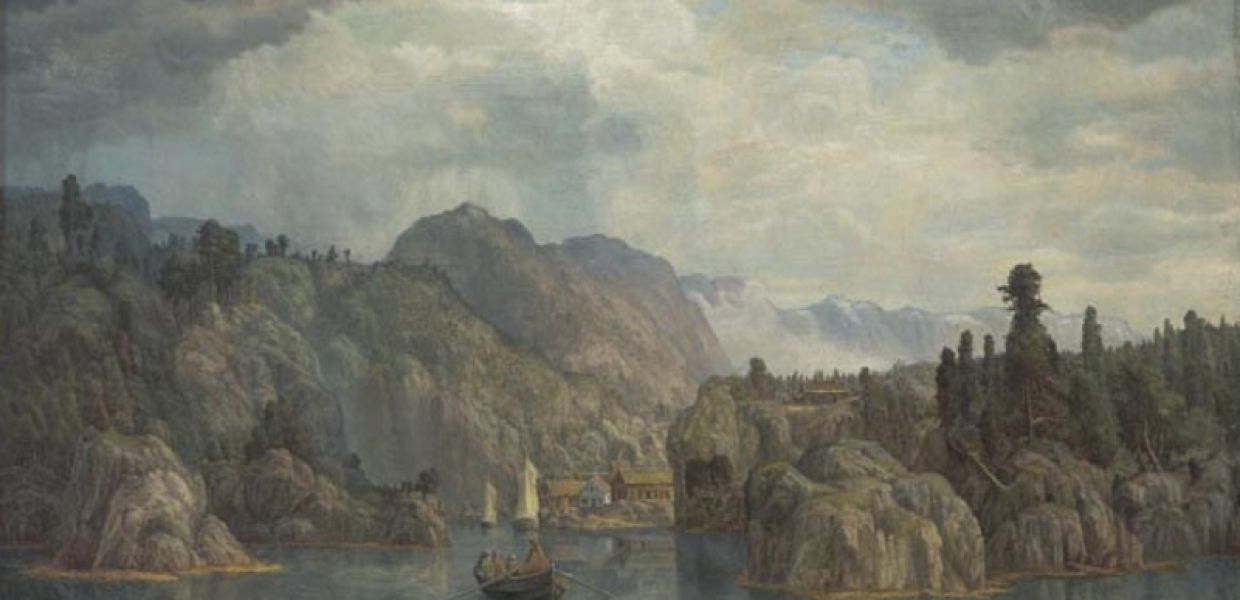Choosing a country's artworks for Europeana 280: Norway

Ministries of culture together with museums and galleries all over Europe have been busy selecting their top artworks for the Europeana 280 collection. Over the next weeks we'll be discovering a little bit more about how and why particular images were selected and the stories behind some of the choices.
Here, Europeana 280's Exhibition Coordinator Ann Maher chats to Norway about their nominations. We’ll start sharing the nominated works from each country soon - so stay tuned!
In the Europeana 280 collection, we will be able to enjoy some emblematic paintings alongside less well-known works. One very familiar anguished face – The Scream by Edvard Munch - was an obvious selection for Norway. “Munch is central in Norwegian visual arts, that goes without saying”, explains Gro Benedikte Pedersen, Coordinator Digital Collection Management, National Museum of Art, Architecture and Design, who were asked to coordinate the Norwegian selection.
There were other more difficult choices. In terms of approach, the National Museum largely made the highlight list on its own but consulted and involved three other institutions. “And it was very hard!” exclaims Pedersen. Selections include the realist painter Harriet Backer (1845-1932): “The fact that she is female was not a main point but we still wanted to highlight such a magnificent female artist at this early stage in the development of Norwegian art”. Also modernist Ragnhild Keyser (1889-1943): “She was rediscovered by Norwegian art history much later and is typical of how the Paris avant-garde was mirrored and further developed outside of the modernist metropolis.”
Inspired by landscape: the nature road
But it is landscapes that have been an enduring and dominant motif in Norwegian art. The selections show a surprisingly diverse range of approaches from the beginning of landscape painting in the 19th century to the modernist interpretation of northernmost Norway in the 1960s by abstract artist Anna-Eva Bergman (1909-1987).
Curators at the National Museum provided a little more detail about the beginnings of the landscape tradition. “There was no art academy in Norway in the 19th century so young artists trained abroad. In Copenhagen, Stockholm and Dresden, and then Düsseldorf and Karlsruhe. Our first landscapist was Johan Christian Dahl (1788-1857) who became professor of Landscape-painting at the Dresden Art Academy in 1824. He had many pupils – also from Norway – and Thomas Fearnley and Peder Balke (1804-1887) [another dramatic selection], were the most famous ones. Dahl focused on a close study of nature; “the Nature Road” as he called it.”

Fjordbunn III, Lars Hertervig (1866), Museum Stavanger, Public Domain.
When Lars Hertervig died on 6 January 1902, he was unknown to most of his contemporaries. As an artist his motives were somewhat secretive and he spent time in psychiatric institutions. A painting of his mysterious trees was nominated for the Europeana 280 Collection in acknowledgement of how Hertervig is now considered one of Norway’s hidden treasures.
Hidden treasures
Lars Hertervig (1830-1902) - a selection from the Stavanger Kunstmuseum – was associated with the Düsseldorf School that attracted painters from all over the world from the 1840s onwards. According to curator Inger M. L. Gudmundson from the Stavanger, it was a period almost synonymous with Norwegian National Romanticism: “The idea of an ‘essential national character’ pervaded Europe at the time and was highly significant for the process that culminated in Norway’s independence from Sweden. It influenced artists to paint their homeland’s nature and folk life”. Hertervig was in his second year of studies in Düsseldorf when he suffered a psychological crisis. When he returned to Stavanger in 1865 with access to materials and supplies during a two-year apprenticeship at a painting firm, he could once again create oil paintings, but he spent the last decades of his life in poverty.
According to Pedersen, “Hertervig with his mysterious landscapes is still not very well known abroad, but we believe he is a somewhat hidden treasure. It may be noted that Jon Fosse, the Norwegian playwright (one of the most popular on the world’s stages today and Norway’s most significant after Ibsen) was inspired by Hertervig’s biography in his novel Melancholia.”
Peder Balke is also one to watch, with great potential to be appreciated by a wider international audience. “Balke is an ‘emerging’ artist internationally”, suggests Pedersen, “partly due to an exhibition in the National Gallery in London last year and on the private art market.” In London, Balke was heralded: ‘Forgotten for a century, he is an important Scandinavian rediscovery”, according to the (British) National Gallery.
We hope there will be many more of those discoveries to come in Europeana 280. For updates about the campaign, follow #Europeana280 on Twitter.
